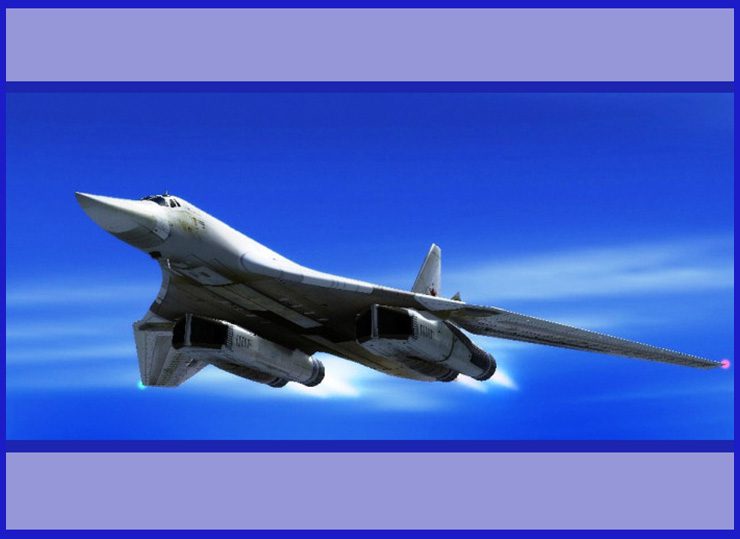The Tu-160 Bomber, a true marvel of aeronautical engineering, represents the pinnacle of Russian military aviation. Let’s Explore The Sleek And Sophisticated Tu-160 Bomber, which has a NATO codename “Blackjack” and is known as the “White Swan” in Russia. It is the most modern strategic bomber in the Russian inventory and boasts the distinction of being the heaviest and most powerful bomber ever built. With a top speed of Mach 2+, the Tu-160 is one of the fastest military aircraft in the world.

With its advanced avionics systems, sophisticated weaponry, and unparalleled speed, this is truly a flying fortress unlike any other—a triumph of human ingenuity and engineering excellence.
Prepare to be amazed by the sheer power and might of this incredible machine. The Tupolev Design Bureau, a force to be reckoned with in the aviation industry, has brought to life a supersonic, variable-sweep wing heavy strategic bomber that will take your breath away. This magnificent creation was birthed in the Soviet Union during the 1970s, and since then, it has only grown in strength and dominance. As of 2022, it proudly holds the title of the largest and heaviest combat aircraft ever built, soaring through the skies like an unstoppable force of nature. But that’s not all. Brace yourself for this mind-blowing fact: it is the fastest bomber in use today, leaving all other aircraft in its wake.

And if that wasn’t enough to make your jaw drop, this monster is also the largest and heaviest variable-sweep wing aircraft ever flown, defying the laws of physics and pushing the boundaries of what we thought was possible. The sheer power and unstoppable force of this bomber will leave you in awe.
It was designed to operate from subsonic speeds at low altitudes to speeds in excess of Mach 2 at high altitudes. Two weapon bays can accommodate a range of munitions, from strategic cruise missiles, short-range guided missiles and nuclear or conventional bombs to mines. Similar in layout to the B1-B, with “Swing” or variable-geometry wings, work on the Russian aircraft began in 1973 in direct weapons to the proposed Rockwell bombers.
However, the Tu-160 is much bigger and heavier than the B-1 and can fly faster and much further. The Tu-160 was known to the West even before its first flight on December 19, 1981, thanks to a US spy satellite that spotted the aircraft on the ground at its base. Tupolev built two prototypes and one mock-up, which was used for static tests.
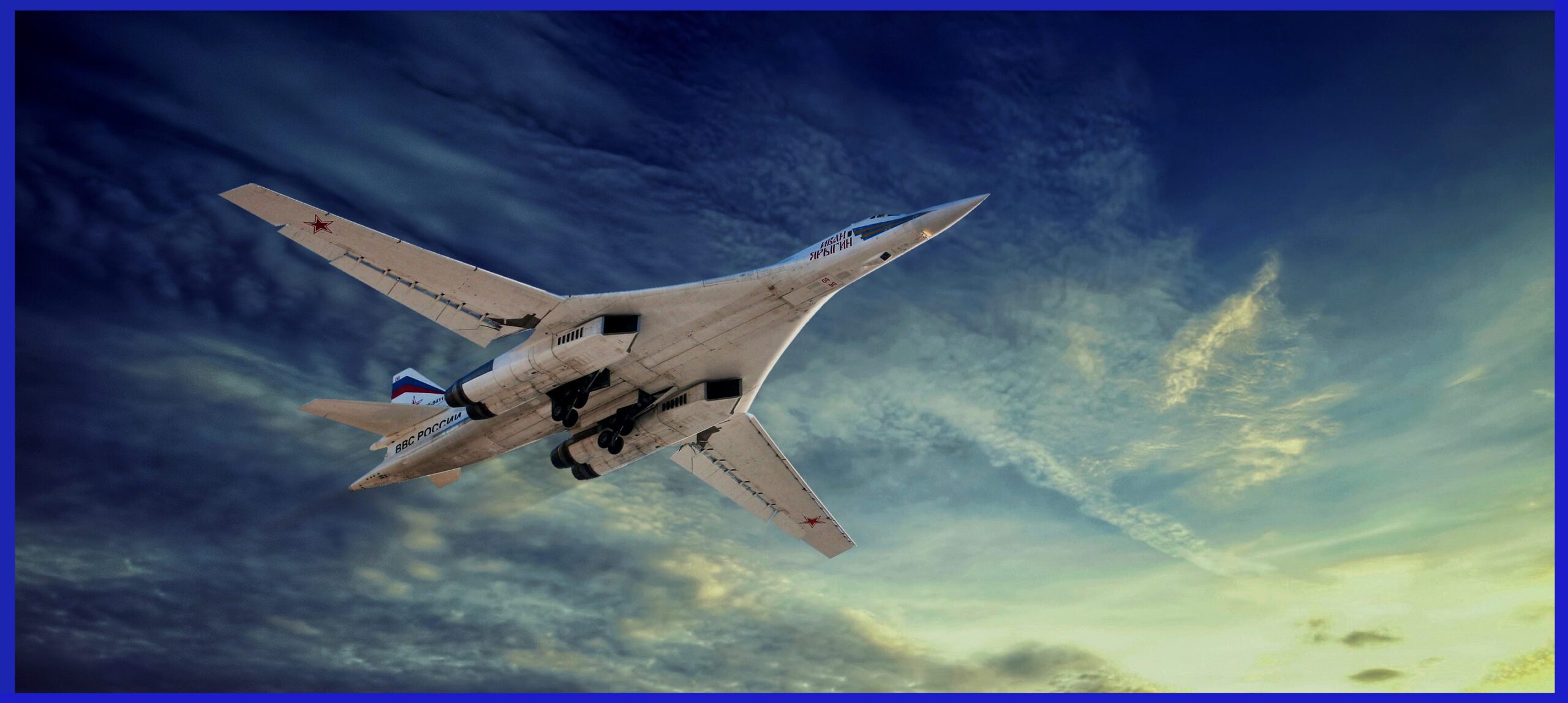
Construction Of The Tupolev Tu-160 Bomber
The project was led by the Tupolev Design Bureau, which had extensive experience designing and producing large, complex aircraft for the Soviet military. The development process was challenging, with numerous technical hurdles to overcome, but the team persevered and eventually succeeded in creating one of the most advanced bombers of its time.
Production began in 1984 and, although initial plans called for the construction of 100 aircraft, when production was stopped in 1992, only 36 bombers had been built due to Strategic Arms Limitations restrictions. The aircraft is powered by four NK-321 – 25,000 kg / 55,025 lb thrust turbofans mounted in pairs beneath the fuselage centre section, can climb up to 70m / 230 ft per second and reach heights of over 18,000 m / 59,000 ft.
Terrain-following radar guides the aircraft at high speeds and low levels, and all four crew members have ejection seats. The bomber, which is controlled by a fighter-style control column and a fly-by-wire system, can be refuelled in-flight using a probe-and-drogue system. The variable-geometry wings can shift from 20 degrees up to 65 degrees, enabling flight at both supersonic and subsonic speeds.
The Tu-160 has the capacity to carry up to 12 Kh-55 long-range missiles and Kh-15 short-range missiles, along with free-fall nuclear and conventional weapons. The bomber is not equipped with any defensive armament, but it features an extensive electronic countermeasures facility.
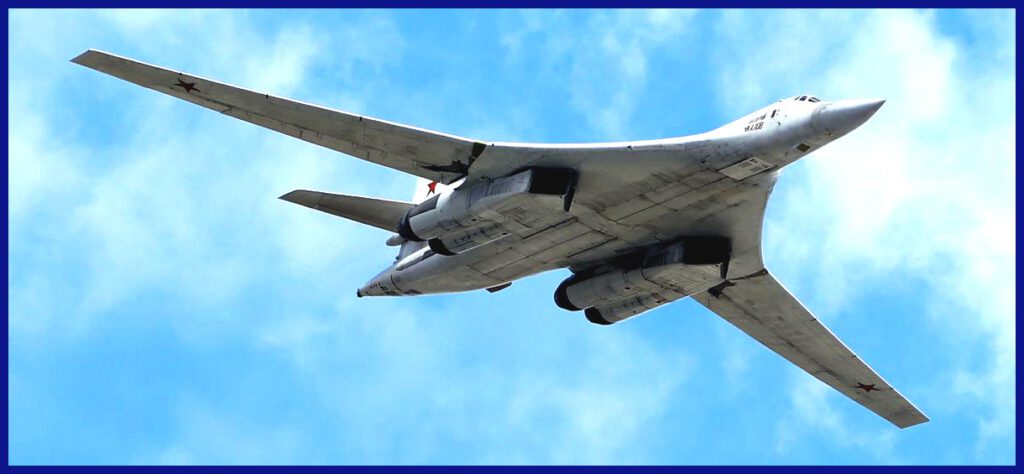
Development of the bomber began in May 1987. Until the end of 1991, 19 Tu-160 bombers served in Ukraine and, on the collapse of the old USSR, the aircraft became Ukraine’s property. The aircraft and associated air-launched missiles were subsequently the subjects of intense negotiations because Russia wanted the aircraft back. A deal was finally struck in exchange for the cancellation of an enormous gas bill between the two countries.
In July 1999, the Russian Ministry of Defence reportedly ordered one Tu-160 strategic bomber, and the cost was said to be 45 million rubles. Studies have also been conducted on the aircraft’s use as a launch platform for the Burlak space-launch vehicle, which is designed to carry payloads of up to 500 kg / 1100 lb in polar orbits. The launch vehicle would be carried beneath the fuselage of the aircraft, which would give it a head start to a high altitude, thus eliminating the need for excessive heavy fuel loads for launch from the earth’s surface.

Since the early 2000s, the active fleet of the Tu-160 bomber has undergone a series of impressive upgrades, with a particular focus on advanced electronics systems. The Tu-160M modernization program represents a remarkable achievement in the ongoing development of this iconic aircraft, with the first updated model delivered in December 2014. In a bold show of confidence, plans were announced in 2015 for the delivery of 50 new-build Tu-160Ms, as well as the upgrading of 16 existing aircraft.
The results have been truly stunning, with the latest serial-built TU-160M taken to the skies for a test flight in January 2022. With an impressive 10 on order, two of these magnificent machines are set to be delivered in 2022 alone. The ongoing development of the Tu-160 is a testament to the unrelenting commitment of the Tupolev Design Bureau to excellence and innovation in the aviation industry.

Throughout the construction phase, it is essential to acknowledge that the redevelopment of the advanced Tu-160 marked a momentous accomplishment for the Russian aviation industry. This achievement stands as a testament to the ingenuity and expertise of the engineers and designers who wholeheartedly devoted themselves to the project. Despite the challenges and obstacles they encountered, their determination paid off, resulting in the creation of an aircraft that remains a vital cornerstone of Russia’s strategic defence capabilities.
The Exact Design Analysis Of The Tupolev Tu-160
The Tupolev Tu-160 is an advanced variable-geometry wing aircraft. Its advanced design includes a fly-by-wire control system and a blended wing profile, which allows for maximum manoeuvrability and flexibility in flight. Full-span slats on the leading edges and double-slotted flaps on the trailing edges, combined with a cruciform tail, provide exceptional lift and stability.
The aircraft is constructed from titanium, which accounts for about 30% of its 110-tonne ( 240,000 lb ) empty weight. The largest component, the swing-wing hinge, weighs an impressive six tonnes ( 13,000 lb ). The Tu-160 is manned by a crew of four skilled professionals, including a pilot, co-pilot, bombardier, and defensive systems operator, who all sit in K-36LM ejection seats for safety.
The Tu-160 bomber boasts four Kuznetsov NK-32 after-burning turbofan engines, which are the most potent engines ever used on a combat aircraft. Unlike the B-1B Lancer, which sacrificed its original Mach 2+ requirement to achieve a smaller radar cross-section, the Tu-160 retains variable intake ramps, allowing it to reach an impressive Mach 2.05 speed at altitude. The Tu-160 is also equipped with a probe-and-drogue in-flight refuelling system that enables extended-range missions, even though it is rarely used.
Additionally, the bomber’s internal fuel capacity is a massive 130 tonnes ( 290,000 lb ), providing plenty of fuel for long-range operations. In 2008, Tu-160 bombers, Il-78 Candid refuelling tankers, MiG-31 Foxhound, A-50 Mainstay, and other Russian combat aircraft conducted an air combat exercise to practice air refuelling.
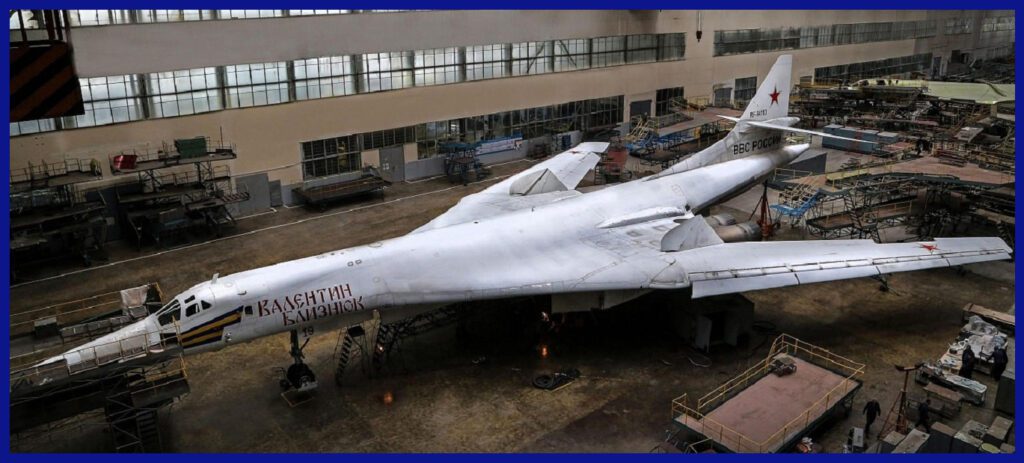
Despite not being a stealth aircraft, the Tu-160 still maintains an impressive weapons-carrying capacity. It is equipped with two internal bays, with each bay capable of holding 20,000 kg ( 44,000 lb ) of free-fall weapons or a rotary launcher for nuclear missiles. Additionally, the aircraft has the ability to carry more missiles externally, with a total weapons load capacity of 40,000 kg ( 88,000 lb ). The Tu-160’s unique design lacks any form of defensive weapons, making it the first post-World War II Soviet bomber to lack such defences. However, in 2020, officials made an announcement that the Russian Air Force plans to equip the Tu-160 with new hypersonic missiles, specifically the Kh-47M2 Kinzhal.
The Tu-160 and B-1 Lancer may exhibit some similarities at first glance, but they belong to different combat aircraft classes. The Tu-160’s primary role is serving as a strategic missile carrier, functioning as a standoff missile platform. Additionally, it surpasses the B-1B in size and speed, boasting a slightly greater combat range. However, the B-1B features a larger combined payload capacity when equipped with an external payload. One notable visual distinction is that the B-1B adopts a subdued dark grey colour scheme to minimize visibility, while the Tu-160 is painted anti-flash white, earning it the nickname “White Swan” among Russian airmen.
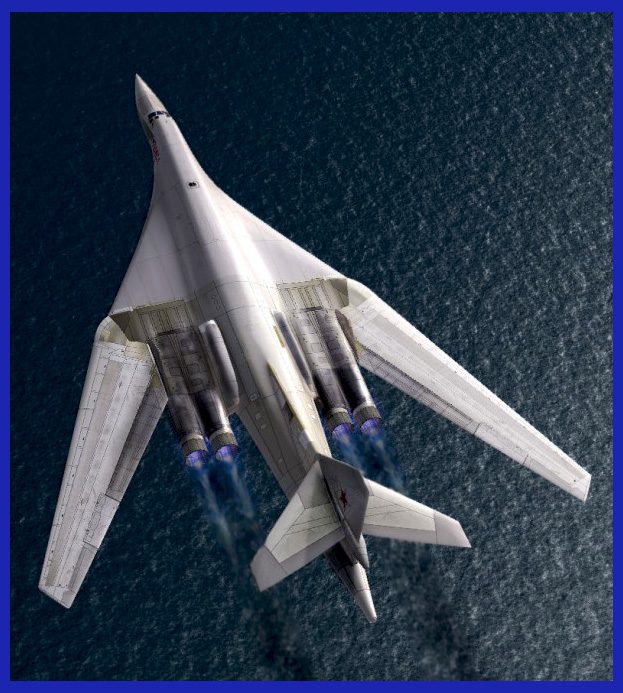
The Operations of the Tupolev Tu-160 Bomber
The Tu-160 and Tu-95MS long-range strategic bombers were used by the Russian Air Force to conduct attacks on November 17, 2015, as part of their military participation in the Syrian Civil War. The attacks were carried out in the provinces of Idlib and Aleppo using Kh-101 air-launched cruise missiles launched from the Mediterranean. These attacks employed 34 to 83 cruise missiles to destroy 14 significant targets. The Tu-22M3 strategic bombers were also deployed to fire unguided missiles at multiple alleged ISIS locations. The Tu-160 and Tu-95MS were utilised in the battle for the first time, making it their combat debut.
Two Tu-160 bombers set a stunning world record for the distance and time of a non-stop flight for this type of aircraft on September 19, 2020. They bravely navigated through the vast and dangerous airspace over the neutral waters of the central part of the Arctic and Pacific oceans, as well as the Kara, Laptev, East Siberian, Chukchi, and Barents seas, showcasing the incredible capabilities of these warplanes while in the air for more than 25 hours and travelling an astounding 20,000 kilometres.
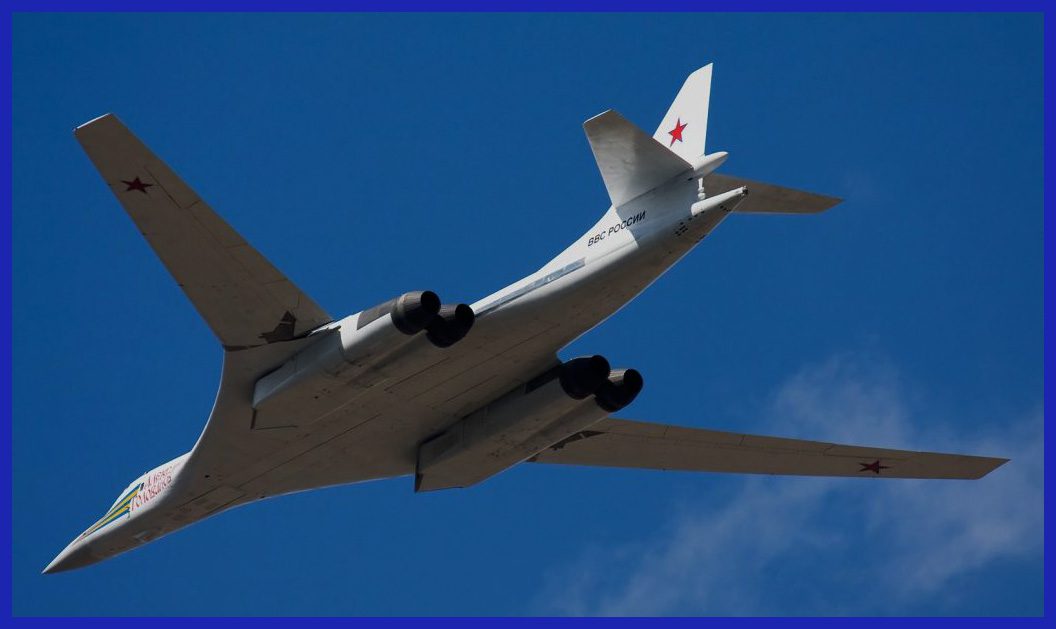
On November 11, 2021, the Belarusian Defense Ministry made a significant announcement that reverberated through the region. They revealed that two Russian Tu-160s had undertaken a bold and formidable training mission over Belarus, accompanied by Belarusian Air Force Sukhoi Su-30s. This display showcased the strength and prowess of the Russian and Belarusian militaries.
The Tu-160 bomber played a prominent role in the dramatic and devastating 2022 Russian invasion of Ukraine. Ukrainian sources reported that on 6 March 2022, a Tu-160, together with a Tu-95MS strategic bomber, unleashed a barrage of eight powerful cruise missiles – believed to be the Kh-101 – at the Havryshivka Vinnytsia International Airport, unleashing destruction and chaos from the Black Sea area. And the nightmare wasn’t over. On 26 June 2022, Ukrainian Air Force spokesman Yurii Ihnat revealed that four to six more Kh-101 cruise missiles had been launched by Tu-160 and Tu-95MS bombers at the heart of Kyiv from the Caspian Sea area, leaving death and devastation in their wake.
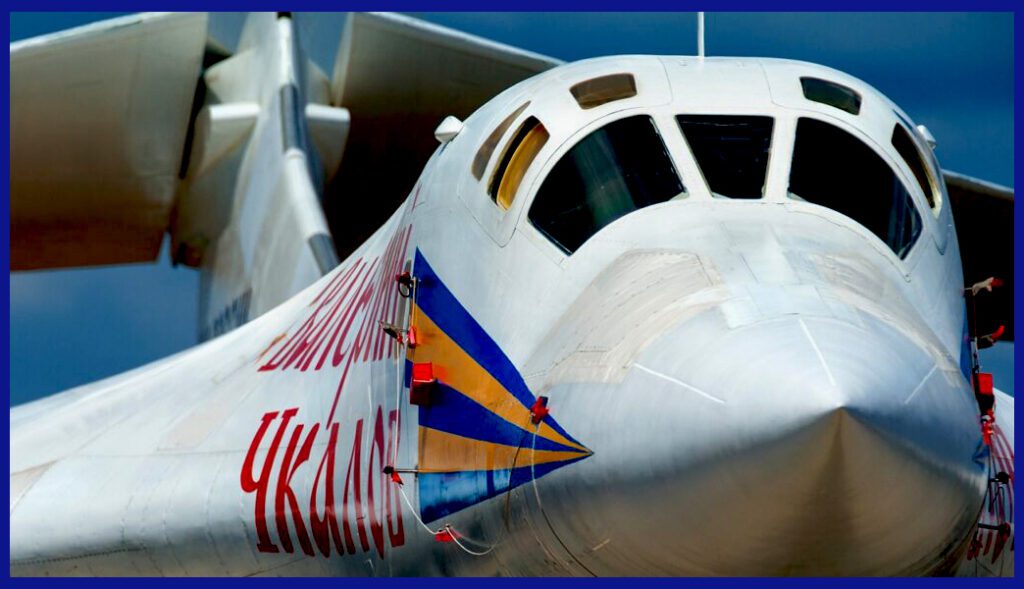
Here Is A Recap Of The Summary Of The Tupolev Tu-160 Aircraft
- The Tu-160 is a heavy strategic bomber with variable-sweep wings.
- It is operated by the Russian Air Force and is considered one of the largest and heaviest combat aircraft in the world.
- The Tu-160 has a maximum speed of Mach 2.05 ( about 2,220 km/h / 1,380 mph ) and a range of up to 12,300 km ( 7,643 miles ) without mid-air refuelling.
- Its primary role is as a strategic missile carrier, capable of carrying various types of nuclear and conventional weapons.
- The Tu-160 has a four-person crew and is outfitted with a variety of cutting-edge defence and avionics systems.
- It was first introduced in 1987 and underwent a significant modernization program in the early 2000s.
- The Tu-160 has been involved in various military operations, including the Russian intervention in Syria and the 2022 Russian invasion of Ukraine.
- As of 2022, Russia has a total of 16 Tu-160 bombers in service, with plans to produce more in the future.
- The Tu-160 is often compared to the American B-1 Lancer bomber, but it is larger, faster, and has a longer range.
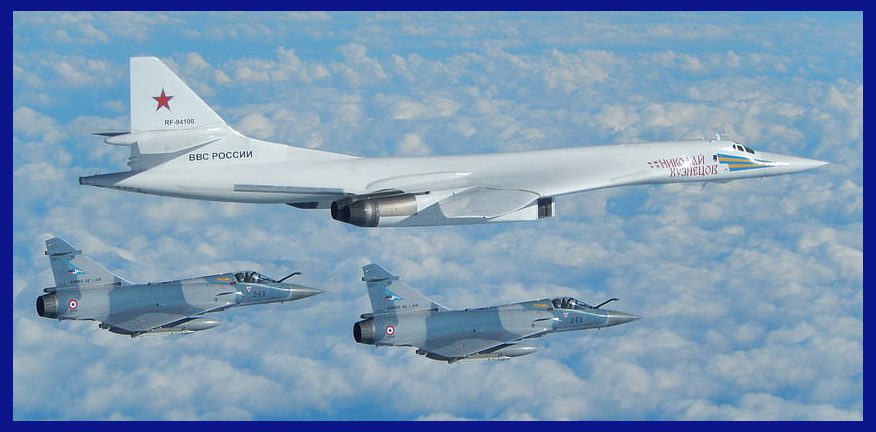
The Tupolev Tu-160 Technical Specifications
- Crew: 4 members of the crew (pilot, co-pilot, bombardier, and defensive systems officer)
- Length: 177 ft 6 in ( 54.1 m )
- Wingspan: 182 ft 9 in ( 55 m ) with spread wings of 20° / 116 ft 9 in ( 35 m ) with Swept wings of 65°
- Height: 43 ft ( 13.1 m )
- Empty Weight: 110,000 kg ( 242,508 lb )
- Max Takeoff Weight: 275,000 kg ( 606,271 lb )
- Payload: 45,000 kg ( 99,208 lb )
- Powerplant: 4 × Kuznetsov NK-321 afterburning turbofan engines, 137.3 kN ( 30,900 lb ) thrust each dry, 245 kN ( 55,000 lb ) with afterburner
- Max Speed: 2,220 km/h ( 1,380 mph ) Of Mach 2.05
- Cruise speed: 960 km/h ( 600 mph ) / Mach 0.9
- Combat range: 2,000 km ( 1,200 mi ) at Mach 1.5 supersonic speeds / Or 7,300 km ( 4,536 mi ) at subsonic speeds
- Ferry range: 12,300 km ( 7,643 mi ) proven range without in-flight refuelling
- Service ceiling: 52,000 ft ( 16,000 m )
- Rate Of Climb: 70 m/s ( 13,780 ft/min )
- Armament: Specific two internal rotary launchers each holding 6 × Raduga Kh-55SM / 101 / 102 / 555 cruise missiles ( primary armament ) or 12× Raduga Kh-15 short-range nuclear missiles. Or it can deliver various free-fall bombs weighing from 250 kg to 1,500 kg
In conclusion, the Tupolev Tu-160 bomber stands as a formidable and highly advanced aircraft, showcasing its prowess in various missions, including combat and record-setting flights. Its sleek design, cutting-edge technology, and impressive performance have solidified its status as a symbol of Russia’s military power and technological prowess. Continuously evolving and improving, the Tu-160 bomber remains a crucial component of Russia’s strategic arsenal. With its long-range capabilities, precision weaponry, and advanced avionics, the Tu-160 bomber represents the pinnacle of modern aviation and military technology. It serves as a testament to human ingenuity and a reminder of the essential role technology plays in shaping the future of warfare.

Alongside this article, seize the exclusive opportunity to acquire premium-scale diecast models of legendary Russian fighter jets, including the Sukhoi SU-57 Felon, SU-30SM Russian Knights, Sukhoi SU-34 Fullback, and Mikoyan MiG-29 Fulcrum. Available only at Air Models, these remarkable and iconic long-range military fighters boast impeccable track records and are now purchasable on AirModels with worldwide delivery. Click here now to secure your piece before the limited stock is depleted.

Important Announcement for Our Valued Readers!
After an article is published, it is possible that updates or changes may have occurred beyond the time of publication. Therefore, it is important to be aware that certain information in the article might be outdated. To ensure the most accurate analysis, it is highly recommended to verify the content with the latest sources available.
However, we are dedicated to delivering outstanding articles on military products and global updates. Maintaining quality and smooth operation requires resources. Your support sustains our efforts in providing insightful content. By purchasing high-quality products through our affiliated links, you help us keep our platform alive and acquire top-notch items. Your unwavering support is invaluable and inspires us to strive further.
We welcome your suggestions and requests for more information, as we value feedback from our readers. If there’s specific defence material or equipment not covered on our site, please share your request in the comments. We’ll strive to research and provide the required information. We sincerely thank you for your unwavering interest in our website, and we eagerly anticipate hearing from you! Enjoy your reading experience!
